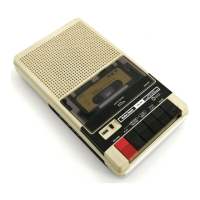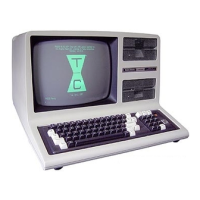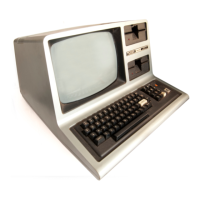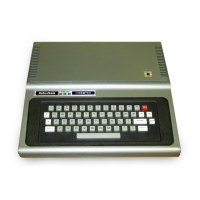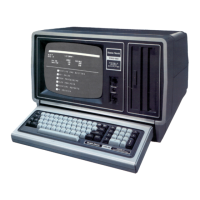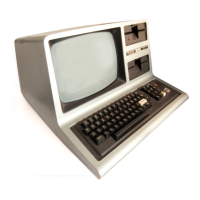OPERATION
Power-Gn/Power-OfF
Sequence
If you
turn
the Printer on or off
while
the
Computer
is
on, the
Computer
may
"lock
up"
(the
keyboard may
appear
"dead", the
Computer may lose any
BASIC
program in
memory, etc.).
To avoid this
problem, always turn
on
your Expansion
Interface (if
connected) first, then the Printer, and lastly, the
TRS-80 (or other
serial output
device).
For the same
reason, do not turn off the Printer
until you
are
through using
the Computer.
(The
Quick Printer II is a solid-state device with
no
moving parts,
except during
actual printing.
So you don't need
to
worry
about
leaving
it on
during an
entire session
with the Computer
—
when it
is
not printing,
the unit is totally
silent
and consumes
very
little
power.)
Power-Up
Messages
When
you have
everything connected,
turn on the Printer
by
sliding
the
POWER switch up
to the
ON position. When you first
turn
it
on,
the Printer
will display a ready message to
assure
you
that it
is
connected properly and
that
its
built-in microprocessor
has
everything "under control".
The
message
also tells you which input
you
have
selected.
g«H**«
PRINTER
mVi
KHHtS
indicates
you
have
selected
the
Radio
Shack TRS BUS input.
rijUi-.n r;
r:TkJT|-ri r::-AT:U i
i l
ei
t T
l*i^7•^-^ rRJiiitk
KtfiHl
rrtrrrfj
indicates you
have selected the Expansion Interface input.
S*4»***M PRINTER
REhBV
ftftttt]
indicates you
have selected the Serial Interface input.
You
are now
ready to turn
on the rest of
your system
and use the
Quick Printer
II.
9
